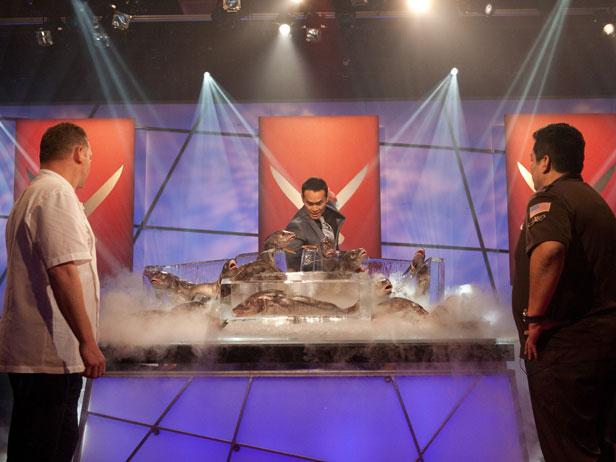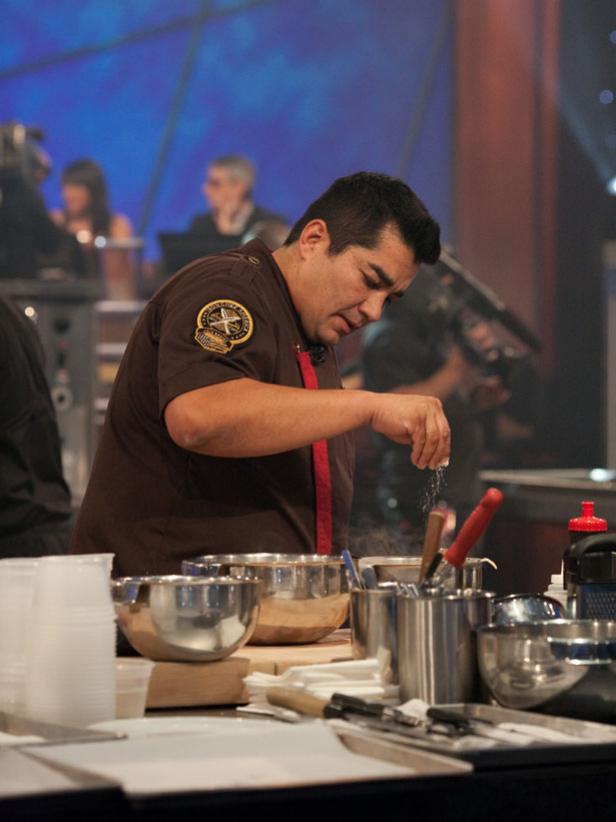Haddock — Iron Chef America Ingredients

If you were to enter any fish and chip shop in North England and request anything but haddock for your deep-fried delight, the servers would look at you as if you were an alien from outer space.
I would have to agree that this beautifully firm and flaky white-fish makes the absolute best fish and chips you will ever eat. But, haddock is so much more versatile than just being deep-fried and, as I hope you discovered from watching the Iron Chef and his challenger on “Battle Haddock,” it makes a delicious and sustainable alternative to cod.
Haddock is a firm-fleshed white-fish that can be found in both the European and North American waters of the North Atlantic. The adult fish can grow to around 3.6 feet in length and migrates each year from shallow waters in the summer to colder, deeper waters in the winter.
Overfishing meant that haddock stocks became severely depleted in the late 1980s and early 1990s. Fortunately, this fish reproduces very rapidly, with the female of the species laying an astonishing 3 million eggs a year. This fact, added to strict fishing quotas and more sustainable forms of fishing, means that haddock is now off the danger list and ready for your table.
When it comes to the nutritional benefits of haddock, I am afraid it's a bit of a mixed bag. The good news is that the fish is very high in protein and vitamins such as B6 and B12. The bad news is that it is very low in omega fatty acids and quite high in cholesterol. All of which makes haddock a dish to have for an occasional treat rather than a daily staple.

While Europeans have been enjoying haddock for centuries, commercial fishing in the United States only really got underway in the 1920s.
The majority of haddock that you will find at your supermarket or fishmonger will be harvested from either the Gulf of Maine or from Georges Bank, which separates the Gulf from the Atlantic Ocean. In 2010, these waters provided nearly 9,500 metric tons of fish.
Haddock has always been a popular fish in Massachusetts where it is also known as “scrod,” a name given to it to differentiate the fish from the more common cod and to indicate its size. Unfortunately, it has never been as popular in the rest of the United States until recently, when supplies of cod began to dwindle.
Haddock is one of my favorite ingredients with which to cook. Its mild taste and firm, flaky texture mean that it is suitable for many styles of preparation, such as baking, frying, grilling and smoking, as well as being the ideal accompaniment to other ingredients.
A classic way of preparing haddock is to split and clean the whole fish and then hot-smoke them over oak chips. This is similar to a classic dish from Scotland called an “Arbroath Smokie” and is one of the single finest things I have ever eaten.
Haddock fillets are delicious when poached gently in milk with slices of onion and a few bay leaves. Use the flavored milk to make a béchamel sauce, flecked with lots of chopped parsley, and serve with the fish, steamed asparagus and lots of buttery mashed potatoes. You can also turn this into a terrific fish pie by placing the fish in a deep dish along with some peeled shrimp and sliced scallops, pouring over the sauce, topping with mashed potatoes and grated cheese and baking until the juices begin to bubble out.
Haddock can be both pan-fried or deep-fried. When pan-frying the fish, try adding a few slices of chorizo sausage to the pan first and then add the fish to cook in the flavored oil. If you want to deep-fry the fish, make a thick batter using your favorite dark beer and deep-fry in canola oil. The batter should come way from the fish, allowing the flesh to steam gently inside its protective casing. Serve with a classic tartar sauce made with mayonnaise, capers, chopped shallots and cornichons.
Haddock is becoming widely available in most supermarkets and it will certainly be on display at any half-decent fishmonger.
Although haddock is no longer endangered, it is still good to look for “hook caught” or “long line caught” fish, as these are less harmful to the oceans than the more traditional methods of trawling.
The flesh of fresh haddock should be clean, white and slightly translucent. If the color is dull then the fish may not be at its best. Although really fresh fish is always best, flash-frozen fish can make a good alternative.































